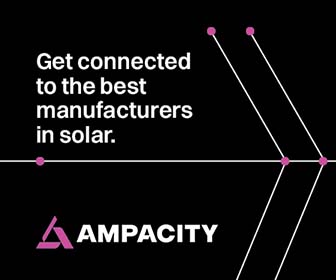Bright Spots in the Changing Rooftop Solar Industry
In terms of adoption, rooftop solar in the U.S. still has a way to go. According to the Solar Energy Industries Association (SEIA), there are currently 1.9 million solar installationsin the U.S. That's just a small fraction of U.S. housing units (135.4 million according to the most current U.S. Census estimates).
 However, America has reached a turning point in its acceptanceof rooftop solar as part of the future of energy generation. U.S. consumers have seen the economic and environmental benefits of rooftop solar in places like Sweden, which aims to completely eliminate fossil fuelsfrom its energy generation by 2040; and in China, where in 2017, contributions from the country accounted for 45 percent of global renewables investment, according to the Australian-based Climate Council.
However, America has reached a turning point in its acceptanceof rooftop solar as part of the future of energy generation. U.S. consumers have seen the economic and environmental benefits of rooftop solar in places like Sweden, which aims to completely eliminate fossil fuelsfrom its energy generation by 2040; and in China, where in 2017, contributions from the country accounted for 45 percent of global renewables investment, according to the Australian-based Climate Council.
As the technology improves and becomes cheaper to produce, more U.S. homeowners are getting off the fence about solar. According to SEIA, U.S. rooftop solar installations are expected to double to approximately 4 millionby 2023, with "signs of diverse and sustained growth of solar" across the country. State and local governments, home builders and roofing manufacturers are starting to notice, and have adapted their products and tactics in ways that signal a bright future for rooftop solar. Here are some of those indicators.
Public and Private Support
Changing attitudes toward solar have encouraged some local governments to mandateor push for rooftop solar on all new housing. Places like California, Hawaiiand Coloradohave been leading the way with local and state-led programs that encourage adoption and remove financial barriers to solar, but even population centers in the northeast - which receives less sun typically than the west coast - are starting to get in on the action. Solarize Philly- a recent initiative that negotiates with solar manufacturers and installers to secure lower prices for Philadelphia residents - is just one example. According to Barron's, homes with solar panels, on average, sell for 4.1 percent morethan similar homes without solar panels.
Home-finding services are also doing more to help homeowners understand the value of rooftop solar. By applying a solar metric to homes in their databases, they provide the extra service of giving homeowners and potential buyers an understanding of their home's rooftop solar and energy-savings potential. Scores are based on the pitch, orientation, and size of the home's roof plane, as well as the average number of sunny days the location experiences. New lendersand loan products have also emerged to help homeowners and contractors finance a variety of home improvements, such as rooftop solar systems, energy storage, and new roofs, all under the same loan.
 The Integration of Roofing and Solar
The Integration of Roofing and Solar
For many years, solar installers and roofing contractors have worked in different silos, but that is starting to change. As solar penetration has increased, the hardware has become less expensive and the software more simplified, allowing more roofing contractors to participate in what will likely be a significant future market. At the same time, more solar installers are adding roofing to their skillset as a way to diversify their product offering. This natural alignment has created the need for cross training and standardized methods among roofing contractors new to rooftop solar installation, and solar installers new to roofing.
Some roofing manufacturers are starting to offer education and certification coursesfor solar installers, particularly on products that integrate with existing roofing products. Also, more roofing manufacturers are developing new solar products, such as solar shingles/tiles and low-profile solar systems, which integrate with existing asphalt or concrete tile roof systems to offer an aesthetically pleasing alternative to traditional rack-mounted solar systems.
Pulling together two industries that were once separate simplifies the sales process and creates opportunities for superior warranty protections, more consistent supply chains, and better pricing. As the two industries put their heads together, it also inspires product innovation. Roofing manufacturers have supply chains and distribution channels that are diverse and well-established, while solar developers are steeped in research and development to produce better and more efficient modules. In the end, consumers will likely see more innovative and affordable products that integrate the best of both industries.
Greater demand for energy efficient homes
The cost of energy has always moved in one direction (up) andthe cost associated with running air conditioning, electricity, and other utilities is often the most variable aspect of a homeowner's finances. As more people become aware of their energy footprint, more new homebuyers are demanding that energy savings be factored into their purchase from the very start.

Net-zero homes- homes that generate more or as much energy as they consume - are in great demand as they combine the best of solar, insulation, geothermal heating, natural lighting and window/siding thickness to ensure that most of a home's energy comes from natural sources, with little waste. Certain niche home buildersfocus exclusively on net-zero home building; rooftop solar is a crucial ingredient to achieve net-zero status. This bodes well for solar installers looking to scale up their operations. Emerging companies have taken advantage of these opportunities by working directly with medium and large home builders to facilitate 'solar communities' on a large scale, installing and operating the rooftop solar systems for entire housing developments at minimal cost to the developer and the homeowner.
While the solar industry is learning and growing, the consumer demand for rooftop solar isn't going away any time soon. With manufacturers, roofers, solar installers, and home builders working together and thinking outside the box to bring solar energy to consumers, rooftop solar is on its way to becoming the norm, rather than the exception.
Chris Fisher is Manager of Solar Product Development & Marketing, CertainTeed. He is responsible for research and development, as well as marketing for CertainTeed's solar division. He joined CertainTeed in 2009 as a product development engineer and has been responsible for new product development activities leading to the commercialization of several generations of solar and solar roofing products. Prior to joining CertainTeed, Chris was the manufacturing manager and head of process optimization for a solar module manufacturer. Chris holds a Bachelor of Science degree from the School of Engineering and Applied Science at the University of Pennsylvania and an MBA from Villanova University.
CertainTeed | www.certainteed.com
Volume: 2019 July/August








.png?r=2181)



